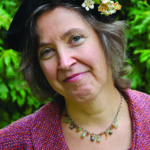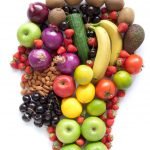The Properties of Water Part 2
Sussanna Czeranko, ND, BBE
As a basis for the proper understanding of the uses and effects of water in diseased conditions, it is important to study and thoroughly master its action in health.
Simon Baruch, 1898, p.3
Water is without doubt the most ancient of all remedial agents for disease.
John Harvey Kellogg, 1903, p.21
The reason that thermic applications and impressions are so powerful in arousing body functions lies in the fact that life activities are carried on only within a certain limited range of temperature.
George Knapp Abbott, 1914, p.28
The early naturopaths had a deep understanding of not only the properties of water itself, but also about its therapeutic properties. The literature they left behind includes discussions about water’s mechanical and thermal effects, its amazing utility as a conductor of heat, its cleansing power and its value as a solvent. Many leading early hydrotherapists – Simon Baruch, George Abbott, John Harvey Kellogg, Curran Pope, and William Dieffenbach, among others – have left us a rich legacy about this extraordinary modality. In the first sentence of his 1914 book, Hydrotherapy, Abbot wrote, for example, “In the application of any therapeutic agent, it is essential to obtain an understanding of those properties of the agent itself, of which particular use is made in the treatment of disease.” (Abbott, 1914, p.17)
Abbott and others left behind a significant collection of writings that we can draw upon as we reacquaint ourselves with hydrotherapy. We can make comparisons between their observations and experiences regarding water and its actual properties, in an attempt to unravel its magical mysteries. As I read the conclusions made and the data that these early hydrotherapists documented in their writings, I am not entirely surprised that their findings correspond with current scientific knowledge. Many of the early naturopathic doctors had strong scientific inclination and skills. What is affirming is that water, whether discussed in terms of quantitative or qualitative finds, had a place in our history which the literature shows was one of deep respect and prevalence in our nascent community of that time. In those days, as a profession, we knew water’s value and we knew how to use it without fear and doubt.
Why Has Hydrotherapy Fallen Into Disuse?
Water has been so ubiquitous in our history and the ascendancy of biomedicine, along with a proliferation of botanical medicine, supplementation, and the rise of PCP roles for NDs in many jurisdictions, that contemporary naturopathic doctors have tended to underestimate or even take for granted hydrotherapy’s labor-intensive, but powerful, therapeutic properties. A question that I am often asking myself as I navigate the abundant literature of our forebears is, how did hydrotherapy as a central modality fall into disuse, notwithstanding the convenience of other therapies and modalities, especially when water therapies had so many remarkable clinical outcomes? In the Lust journals, frequent and reliable accounts of complete recovery from serious illness can be found in the literature about hydrotherapy. Examples of cases include infantile cholera, Spanish flu, diabetes, and others. What happened? I fear that the answers to this question are many, and not so simple, if we are to adequately account for the relative demise of hydrotherapy in our profession. One of my many goals in this conversation is to provide a deeper understanding of those who championed hydrotherapy and why they believed with such confidence and conviction in this fundamental naturopathic tool.
Contemporary allopathic medicine has habituated us to reach for a bottle of instant cures in the form of pills and potions. Biomedicine’s assumed and politically-reinforced marketplace dominance, complete with the frenzy of heroic hard-line drugs to solve every symptom that a patient presents, is certainly the landscape within which this loss to our active repertoire has occurred. The patient is slammed between a fear of not acting and a concomitant fear of the side effects from the drugs that he or she is summarily given. Prescription drugs as the answer for what ails people unrelentingly insinuated itself as a routine medical response and option for disease management. At the same time as naturopathic professionals experienced a more fractured confidence in nature-cure and water-cure, the parallel dominance in the allopathic sphere of prescription use in the United States has been rising for decades. The number of Americans who use 1 or more daily “meds” is staggering. In the older generation, this percentage increases dramatically, both in the number of people taking drugs and in the number of drugs used. Those over 60 years of age often have multiple prescriptions. In fact, the Centers for Disease Control (CDC) reports that prescription drug use among older Americans is such that more than “76% used 2 or more prescription drugs and 37% used 5 or more.” (CDC, 2010) The insidious encroachment of drugs into the lifestyles and mindsets of Americans is a serious statement about the state of health and long-term wellness in a country where 18% of GDP is not enough to curtail the world’s highest chronicity rates in several categories. In 2011, more than 4 billion prescriptions were written for a population willing to buy them or to pay for insurance which did the procurement for them.
It was not always thus. The early naturopathic profession had no such deference to this incipient prescription drug culture. Indeed, water-cure was the foundation upon which Benedict and Louisa Lust and their colleagues built thriving practices. Their confidence in the therapeutic uses of water was unshakeable, and they certainly had patients with illnesses whose frequency and seriousness put water to the test with unparalleled and successful results. The writing they left behind detailing their work illustrates a powerful focus on water. In this regard, Dieffenbach accredits “Professor Winternitz for inaugurating elaborate tests upon healthy human beings to determine the action of water on the skin, the circulation, the nervous system, the secretions, respiration and temperature and also upon metabolism in general.” (Dieffenbach, 1909, p.11) Following in the footsteps of Winternitz, covering 3 decades of tireless studies and numerous contributions, Simon Baruch and John Harvey Kellogg propelled water therapies forward that were consistently adopted by many physicians in the early 20th century. These men left indelible marks upon hydrotherapy, with their rich and encyclopedic body of knowledge.
Hydrotherapy and Hydriatic
Hydrotherapy was championed by many. Studying and practicing hydrotherapy for many years, Baruch worked assiduously in his publications to illuminate techniques and protocols for his medical colleagues, championing the value of water in clinical practice. Simon Baruch defines hydrotherapy thus: “Hydrotherapy includes the application of water in any form from the solid and fluid to vapor; from ice to steam, internally and externally.” (Baruch, 1898, p.1) Interestingly, Baruch distinguished hydrotherapy from another term used in the era, “hydriatic,” and provided an exact definition for both words. “Hydropathy is a method of practice… hydriatic is an adjective in common use, qualifying nouns connected with the use of water in medicine.” (Baruch, 1898, p.2) For the modern naturopathic doctor who chooses to use it, hydrotherapy invariably entails the use of tap water; balneotherapists of Baruch’s era, on the other hand, used thermal mineral water. In balneotherapy, the mineral composition in water, in order to be therapeutic, had to contain a minimum of 1 gram per liter, and the thermal temperature of the mineral waters from the hot springs had to be 20 °C or warmer. Let us consider, for purposes of this discussion, the use of tap water for hydrotherapy, a source most common to our contemporary clinics. Many of us do not live near a hot springs with mineral waters; thus, it behooves us to explore how we can capitalize on the water that exists routinely in our clinics.
To be able to use water, one must have a keen understanding of water in all of its states: solid, fluid, and gas. In hydrotherapy, ice is used in the form of ice-packs, water is used across a wide range of temperatures and applications, and vapor steam baths, such as those in the Russian steam bath, are commonplace in many venues. Water is a perfect medium because it exists conveniently in all 3 states and provides great flexibility for clinical applications.
There is no other substance quite like water. As Kellogg often insisted, water has a unique ability to conduct heat for therapeutic purposes that is unrivaled. “In the power of water to communicate and absorb large quantities of heat, without itself undergoing a corresponding change in temperature lies its most useful property.” (Abbott, 1914, p.17) Kellogg further states, “The readiness with which water absorbs and communicates heat and the great amount of heat which it is capable of communicating or storing, exactly adapts it for use in making thermic application of either heat or cold to the human body.” (Kellogg, 1903, p.38)
One of the properties of heat upon elements is that heat causes things to expand. Heat causes expansion and cold causes constriction. This is true for almost everything, except water. For example, water expands if its temperature is above 4 °C, but if water is at 4 °C, it is at its maximum density. In other words, at this temperature, water occupies the least possible space. (Abbott, 1914, p.19) As water cools below 4° C and freezes, instead of contracting, water does the opposite and will expand. Abbott explains, “It is because of this change (expansion) in freezing that ice floats. If water continued to contract on freezing, becoming denser it would then sink to the bottom, and so remain frozen for a much longer time.” (Abbott, 1914, p.19) This fact of water expanding as it freezes makes it possible for bodies of water on the planet, lakes, and seas to remain liquid so that marine life can persist. It is also a powerful characteristic of water therapies.
Water’s relationship to heat is also quite unique. When we look at the amount of heat required to raise one mL of water 1 °C, we find that “water absorbs a large amount of heat without manifesting a corresponding change in temperature… The heat necessary to raise a given weight of water 1 °C is greater than that of any other substance.” (Abbott, 1914, p.20) Because of this special property, water is a valuable comparator, against which, in terms of energy transfer, temperature, and change of state, we compare everything.
Mechanical And Thermic Effects
A primary goal for using water externally is to have an impact on the nerves and, ultimately, on circulation, respiration, body temperature, tissue change, and secretions. Baruch explains the principles involved: “The application of water to the cutaneous surface is the most important function of hydrotherapy. It involves chiefly thermic and mechanical effects. The action of these, whether by cold, heat, or mechanical impact, is that of irritants to the peripheral sensory nerves.” (Baruch, 1898, p.29) These 2 concepts – mechanical and thermic –need to be understood. Mechanical effects of water can be accomplished by a number of means: douches (jet or passive), showers, ablutions, friction baths, or compresses. Curran Pope comments, “The forcible impact of water of varying degrees of pressure, influences by its mechanical action on the peripheral nerve endings and blood supply, independent of the thermic action.” (Pope, 1909, p.12) The force with which the water is applied can be gauged to achieve the desired effect. As well, water used in combination with friction, percussion or massage has a very desirable effect.
Water As Conductor Of Heat
“The temperature-conducting capacity of water is 27 times greater than that of air.” (Baruch, 1920, p.24) Baruch gives an example: “Water conveys to the skin much stronger thermic impressions than does air at the same temperature, a fact easily discovered in exchanging a room temperature at 75 °C for a tub bath at the same temperature.” (Baruch, 1908, p.31) Water as a good conductor of heat has a stronger impression upon the body than air. Metals have an even more intense impact upon the body of the same temperatures as water.
To use very cold water for short periods is an indispensable adjunct, but long periods can have detrimental effects. Similar effects for very hot water occur. Baruch recommended, “By remaining within the range of safety, we still have a large choice of temperature (from 34 °F to 120 °F / 1 °C to 49 °C) which renders water a most flexible therapeutic agent.” (Baruch, 1989, p.28) Kellogg was more liberal in the range of temperatures used in hydrotherapy. Kellogg states, “The temperatures employed in hydrotherapy are practically within the limits of 32 °F and 140 °F (0 °C to 60 °C).” (Kellogg, 1903, p.40) He continues, “Applications are occasionally employed at a lower temperature, and very hot water may sometimes be applied at a temperature as high as 160 °F (71 °C), as a means of stopping hemorrhages; but great care must be used.” (Kellogg, 1903, p.40)
The Brand or cold rubbing bath or the Kuhne friction hip bath demonstrates that when one combines friction or rubbing with the thermic stimulus of cold water, the benefits experienced by the patient are greatly enhanced.
Water As Cleanser
Our proclivity for daily showers and bathing in the developed countries amounts to a vast consumption of water totaling about 500 liters per person daily. Yet, “there is no agent equal to water in cleansing action, and the daily bath is, as a rule, part and parcel of civilized mankind’s daily routine.” (Pope, 1909, p.12) Pope continues, “It may be stated that water, when properly used, keeps the body in health, prevents the onset of disease, resists the attacks of pathogenic bacteria, and is, as Hoffman says, ‘more nearly a panacea for human ills than any other known agent.’” (Pope, 1909, p.13)
Water as Solvent
Water is the universal solvent. All of the food that we eat is deconstructed and assimilated via the fluids in our body. Water makes it possible for digestion and the transport of nutrients to tissues. Nutrients are easily made soluble and useable. “Water is an essential constituent of all tissues of the body, forming about 70% of the entire body weight. Thus a [person] weighing 150 pounds consists of 105 pounds of H2O.” (Dieffenbach, 1909, p.9)
It is the fluids in our body that transport nutrients to the tissues and remove wastes to be eliminated by the emunctories. Just as we require water to keep our exterior clean, water is necessary for the removal of the internal products of metabolism and exogenous toxins. Abbott states, “Not only is [water] concerned in the mere physical interchange of nutrient and waste substances, but it is actually necessary in by far the greater number of all chemical changes which these substances undergo.” (Abbott, 1914, p.25)
Summary
As depicted above, our early naturopaths left us abundant information about not only the properties of water itself, but also about its therapeutic properties. In the next article, we can turn our attention to the role of the skin in hydrotherapy and the reflex system developed by John Kellogg. In the meantime, please send me the temperature of your cold water used in your clinic for the survey [[email protected]].
 Sussanna Czeranko ND, BBE, incorporates “nature-cure” approaches to primary care by including balneotherapy, breathing therapy, and nutrition into her naturopathic practice. Dr Czeranko is a faculty member working as the Rare Books curator at NCNM and is currently compiling a 12-volume series based upon the journals published early in the last century by Benedict Lust. Four of the books have been published: Origins of Naturopathic Medicine, Philosophy of Naturopathic Medicine, Dietetics of Naturopathic Medicine, and Principles of Naturopathic Medicine. In addition to her work in balneotherapy, she is the founder of the Breathing Academy, a training institute for naturopaths to incorporate a scientific model of breathing therapy called Buteyko into their practice. She is a founding board member of the International Congress of Naturopathic Medicine and a member of the International Society of Medical Hydrology.
Sussanna Czeranko ND, BBE, incorporates “nature-cure” approaches to primary care by including balneotherapy, breathing therapy, and nutrition into her naturopathic practice. Dr Czeranko is a faculty member working as the Rare Books curator at NCNM and is currently compiling a 12-volume series based upon the journals published early in the last century by Benedict Lust. Four of the books have been published: Origins of Naturopathic Medicine, Philosophy of Naturopathic Medicine, Dietetics of Naturopathic Medicine, and Principles of Naturopathic Medicine. In addition to her work in balneotherapy, she is the founder of the Breathing Academy, a training institute for naturopaths to incorporate a scientific model of breathing therapy called Buteyko into their practice. She is a founding board member of the International Congress of Naturopathic Medicine and a member of the International Society of Medical Hydrology.
References
- Abbott, G. K. (1914). Principles and Practice of Hydrotherapy for Students and Practitioners of Medicine. Loma Linda, CA: The College Press.
- Baruch, S. (1898). The Principles and Practice of Hydrotherapy: A Guide to the Application of Water in Disease, 1st ed. New York, NY: William Wood and Company.
- Baruch, S. (1908). The Principles and Practice of Hydrotherapy: A Guide to the Application of Water in Disease, 3rd ed. New York, NY: William Wood and Company.
- Dieffenbach, W. H. (1909). Hydrotherapy. New York, NY: Rebman Company.
- Gu, Q., Dillon C. F., Burt, V. L. (2010). Prescription drug use continues to increase: U. S. prescription drug data for 2007-2008. Centers for Disease Control and Prevention. Retrieved May 15, 2014, from www.cdc.gov/nchs/databriefs/db42.htm.
- Kellogg, J. H. (1903). Rational Hydrotherapy, 2nd ed. Philadelphia, PA: F. A. Davis Company Publishers.
- Pope, C. (1909). Practical Hydrotherapy: a manual for students and practitioners. Cincinnati, OH: Cincinnati Medical Book Company.









